|
Aug
22
2022
|
|
Posted 3 years 139 days ago ago by Admin
|
|
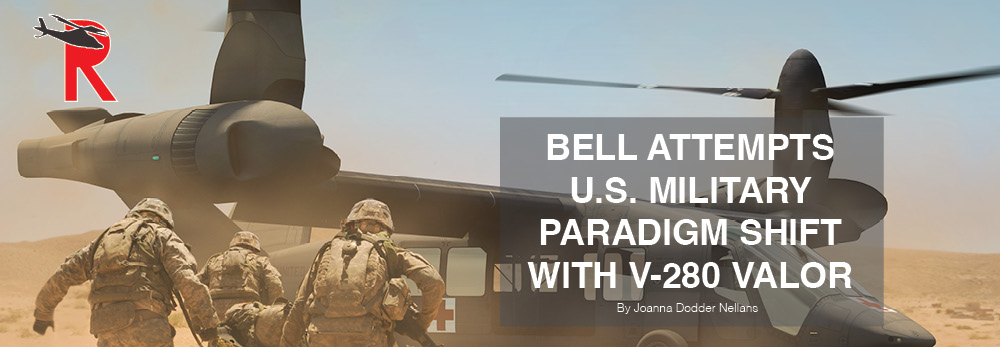
One word is frequently repeated amongst Bell leaders about the V-280 Valor tiltrotor aircraft they are building for the U.S. Army: transformational.
"It is a leap ahead, not a step ahead," said Terry Horner, director of government relations at Bell and a retired Army chief instructor pilot. "We're seeing right now in world events why these new capabilities are important."
Bell is competing against a Sikorsky-Boeing team for the right to build the military's next-gen medium helicopter. The Army is the lead branch on the Future Long-Range Assault Aircraft (FLRAA) program to develop that helicopter. While Bell is fielding its V-280 Valor in the competition, Sikorsky-Boeing is offering its compound Defiant X with a coaxial rotor system and pusher propeller. Both competitors say their prototypes can fly twice as fast and far as the UH-60 Black Hawk they are seeking to replace. The Army is likely to choose the winner this year and wants its new aircraft operational by 2030.
Bell retired its Valor demonstrator earlier than the other team after 215 hours of test flights including 15 hours with Army test pilots onboard, said Frank Lazzara, director of sales and strategy for Bell's FLRAA program. The Valor executed all key parameters, he said. Then Bell moved on to inspections that produced "immaculate" results, and concluded existing military hangars will work fine with the Valor. A modular open systems approach (MOSA) is key to ongoing design with the military that includes cost control, multi-mission capability, risk reduction, availability and sustainability, the team added.
Bell also built a systems integration lab, a systems test center and a manufacturing test center while expanding its overhaul center, said Doug Englen, manager of FLRAA sales and strategy for Bell in the Fort Campbell area. "We are preparing for the future here at Bell," he said.
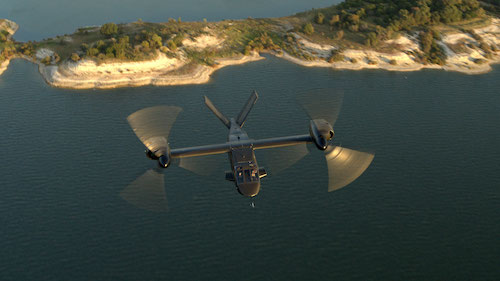
What is the Future Vertical Lift program?
With its Future Vertical Lift (FVL) program to create a new family of multi-role rotorcraft, the U.S. Army is leading the U.S. Department of Defense plan to field a new generation of rotorcraft for the first time in four decades.
As the Army puts it, the program's goal is to develop technologies that improve speed, range, agility, endurance and sustainability. The FVL initiative officially began in 2009.
The program aims to replace current light, medium-light, medium, heavy, and ultra helicopters with next-gen aircraft. The Army's first focus was to replace the medium-lift UH-60 Black Hawk helicopter that went into operation in 1979, christening the Future Long Range Assault Aircraft (FLRAA) program. It then added the light scout to replace the OH-58 Kiowa, dubbing it the Future Attack and Reconnaissance Aircraft (FARA) program.
In March 2020, the Army chose Bell and Sikorsky as the final competitors in the FARA program, with Bell's 360 Invictus featuring a four-bladed rotor, open tail rotor and lift-sharing wing versus Sikorsky's S-97 Raider that features a compound design, using twin coaxial rotors to provide lift and a pusher propeller to enhance speed.
In March 2021, the Army chose Bell and Sikorsky-Boeing to compete in the FLRAA program with two radically different styles of aircraft. The Bell V-280 is a tiltrotor aircraft similar to the V-22 Osprey, with rotors at the end of its wings that swivel. The Sikorsky/Boeing Defiant X is a compound helicopter like the Raider.
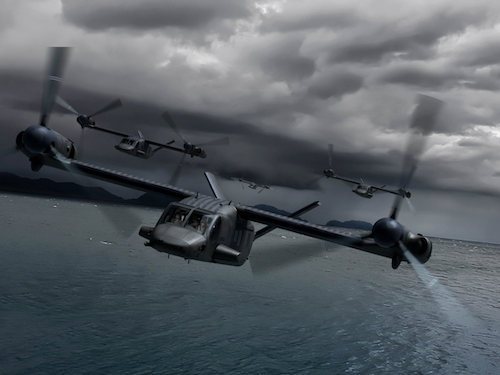
Bell is building on 70 years of history with the tiltrotor concept, including the V-22 Osprey that has served other branches of the U.S. military for 40 years now.
"Bell is no stranger to transformative technologies," said Englen, who flew about 2,500 Army combat missions before retiring.
Lazzara noted that Army Chief of Staff Gen. James McConville wants transformational speed, range and reach in the aircraft slated to replace its long-standing UH-60. Lazzara flew the V-22 Osprey tiltrotor for the U.S. military, so he's quite familiar with the technology and maintains nothing can beat its speed, range and reach.
"This is an aircraft that provides next-level capability," Lazzara said of the Valor. "Although that technology has been around for so long, we continue to see it do new things and be called upon to do things that only a tiltrotor can do." The three veterans recently spoke about the Valor during a small online media roundtable.
"The tiltrotor is a fairly easy aircraft to fly," Lazzara added. "There's a lot in there that reduces pilot workload...It's an amazing design and it's just gotten better, and the second generation is a real opportunity for the Army."
Bell leaders emphasize their cooperative efforts with the military as they work to make the Valor the multi-mission workhorse that the Army wants it to be. The Army's Future Vertical Lift Cross-Functional Team is currently "flying before buying" as partners develop the FLRAA and Future Attack Reconnaissance Aircraft (FARA), Army Chief of Staff Gen. James McConville noted during an Association of the U.S. Army breakfast at the National Museum of the U.S. Army earlier this year. Bell also is competing in the FARA program with its Invictus, featuring a single main four-bladed rotor and open tail rotor, while Sikorsky is proposing its Raider X coaxial.
"Note, these are aircraft and not helicopters because the transformational requirements we asked from industry are not resonant in traditional helicopters," McConville told the breakfast crowd.
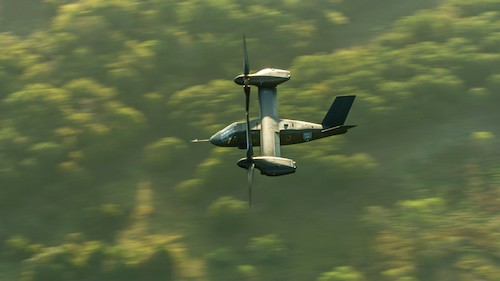
Alongside twice the speed and combat radius of the H-60 that's been in service for the last four decades, Bell touts the Valor's increased agility and flexible payloads. It flies at 280 KTAS with a combat range of 500-800 nm, with the ability to refuel in the air. It carries 12 passengers. The Army is seeking an aircraft with a top speed of at least 250 knots and potentially up to 280 knots, with a combat radius of 200-300 nm, passenger capacity of 12, a 50-year service life, mid-air refueling, and an average unit price of $43 million (in 2018 dollars). The Black Hawk averages about $15.5 million while the Osprey averages $26 million.
Compared to the Osprey, the Valor caters more toward the Army assault mission with a straight wing and engines that do not rotate, allowing the inclusion of six-foot-wide sliding cabin doors on the sides.
The Valor is wider but shorter than the Black Hawk, so the Bell experts also say it's effective in urban warfare. Lazzara said he felt more comfortable landing the V-22 than the CH-53 on a ship deck. He heard criticism about the way the rope flies during fast rope insertion with the V-22, "but the world's best learned how to do it just fine." In V-280 testing, the rope "flew very benignly," he added.
"We've just begun to understand the capabilities of a tiltrotor in the operational Army, and I think that once they get it into their hands and start using it, they're going to expand that envelope exponentially," Horner predicted.
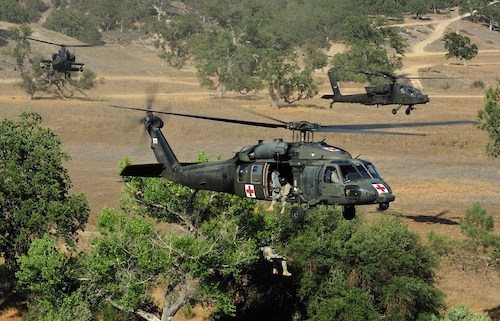
A brief history of the Black Hawk
The UH-60 Black Hawk has served as the U.S. Army's primary aerial workhorse for more than four decades. It makes up the Army's largest rotary-wing fleet with more than 2,200 airframes, with approximately 1,200 more operating in 30 partner and allied nations.
As the Army's utility tactical transport helicopter, this four-blade twin-engine rotorcraft provides air assault, general support, aeromedical evacuation, command and control, and special operations support to combat, stability and support operations. It is also a key component for homeland security and relief operations.
The Black Hawk entered into service in 1979 and is named after Chief Black Hawk (1767-1838) of the Sauk Tribe indigenous to the Midwestern U.S. The rotorcraft has accumulated more than 10 million total fleet hours for the Army. It has been modified and upgraded over the decades to support evolving missions and roles including mine laying, medical evacuation and special operations. The Army also has extended the aircraft’s lift and range capabilities, reduced operation and sustainment costs, and enhanced survivability.
The latest model in use is the UH-60M that includes an advanced digital avionics suite, improved GE-701D engine and wide-chord blades. It provides greater cruising speed, rate of climb and internal load than the original UH-60A. It can transport 11 troops alongside a crew of four at a cruising speed of 151 knots, with a cargo hook capacity of 9,000 pounds. The medical evacuation (medevac) version of the UH-60M, the HH-60M, includes an integrated medevac mission equipment package kit that provides day, night and adverse weather emergency evacuation of casualties
Despite the Future Long Range Assault Aircraft (FLRAA) program that will produce a new medium-lift helicopter for the Army, the Black Hawk is likely to continue to serve the Army well into the future with the continued addition of major upgrades.
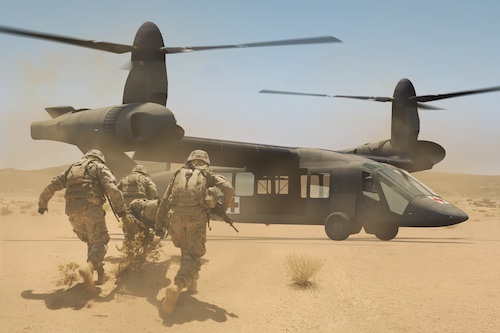
It's important to design an aircraft for a variety of missions, Lazzara said. For example as a medevac transport with double the speed and range, it can not only save troop lives, but also their quality of life because it can reach superior medical services in less time. And the cabin will be several hundred cubic feet larger than the Black Hawk, allowing more room for medics to maneuver around the patient, he said. Bell is working with commercial medevac experts on the cabin design, he added.
The Valor also will serve well in disaster relief, Horner said, noting its speed will enable it to be stationed farther away from disasters so local airports will have more room for other support aircraft.
Bell is making sure that it doesn't design out future opportunities for the Valor, Lazzara added. The Marine Corps and Navy already are using the tiltrotor, and future commercial applications are bright.
READ MORE ROTORCRAFT PRO: https://justhelicopters.com/Magazine
WATCH ROTORCRAFT PRO YOUTUBE CHANNEL: https://buff.ly/3Md0T3y
You can also find us on
Instagram - https://www.instagram.com/rotorcraftpro/
Facebook - https://www.facebook.com/rotorcraftopro/
Twitter - https://twitter.com/justhelicopters